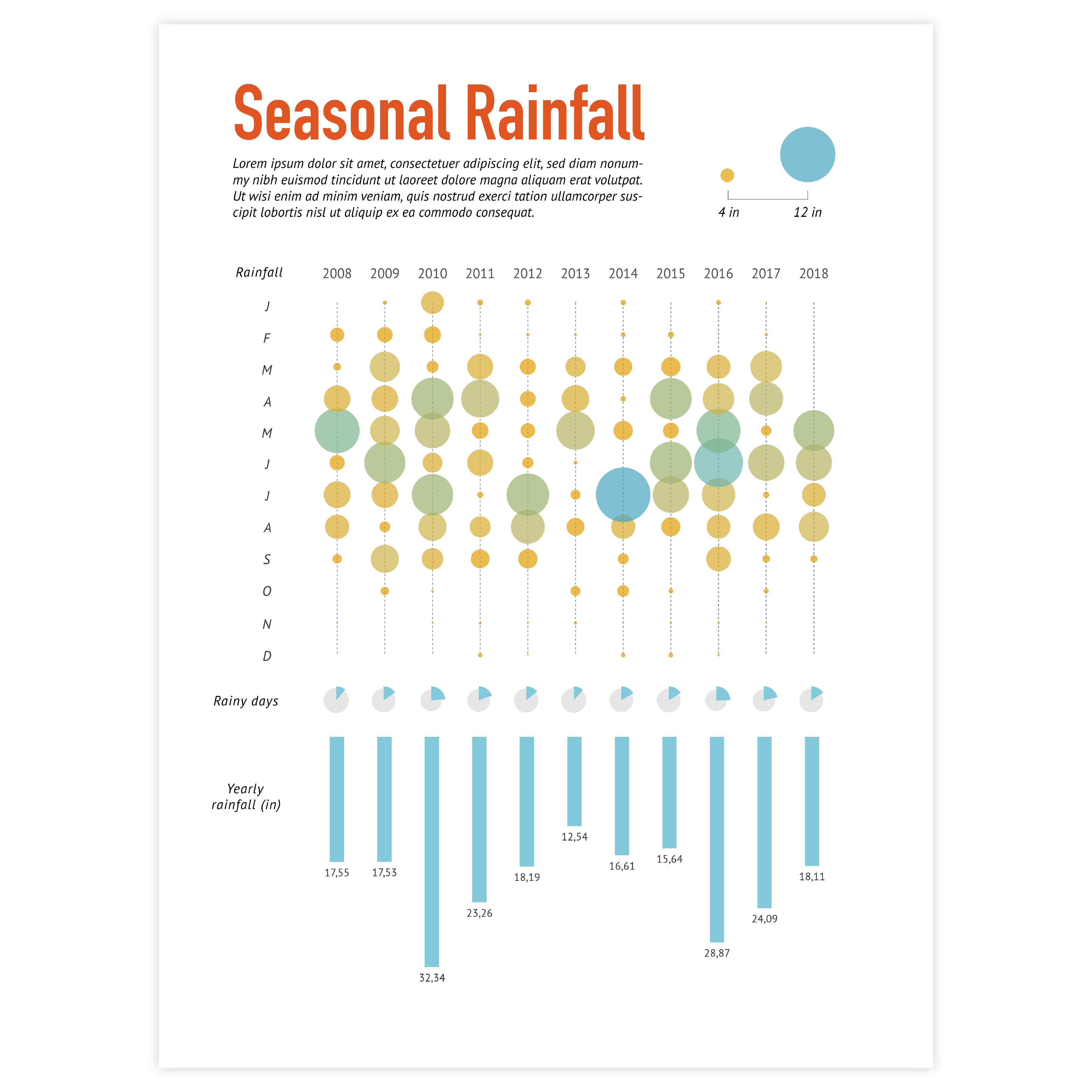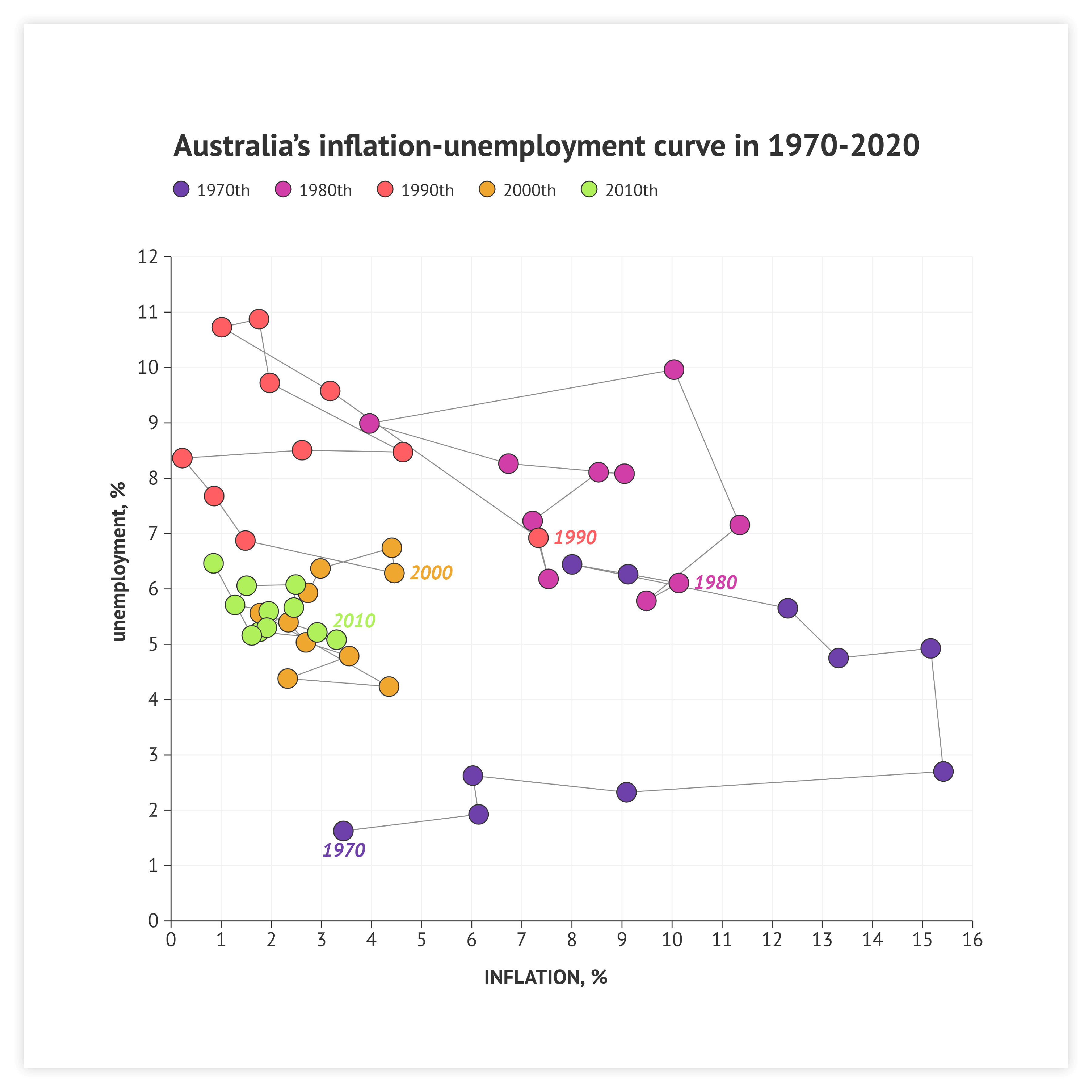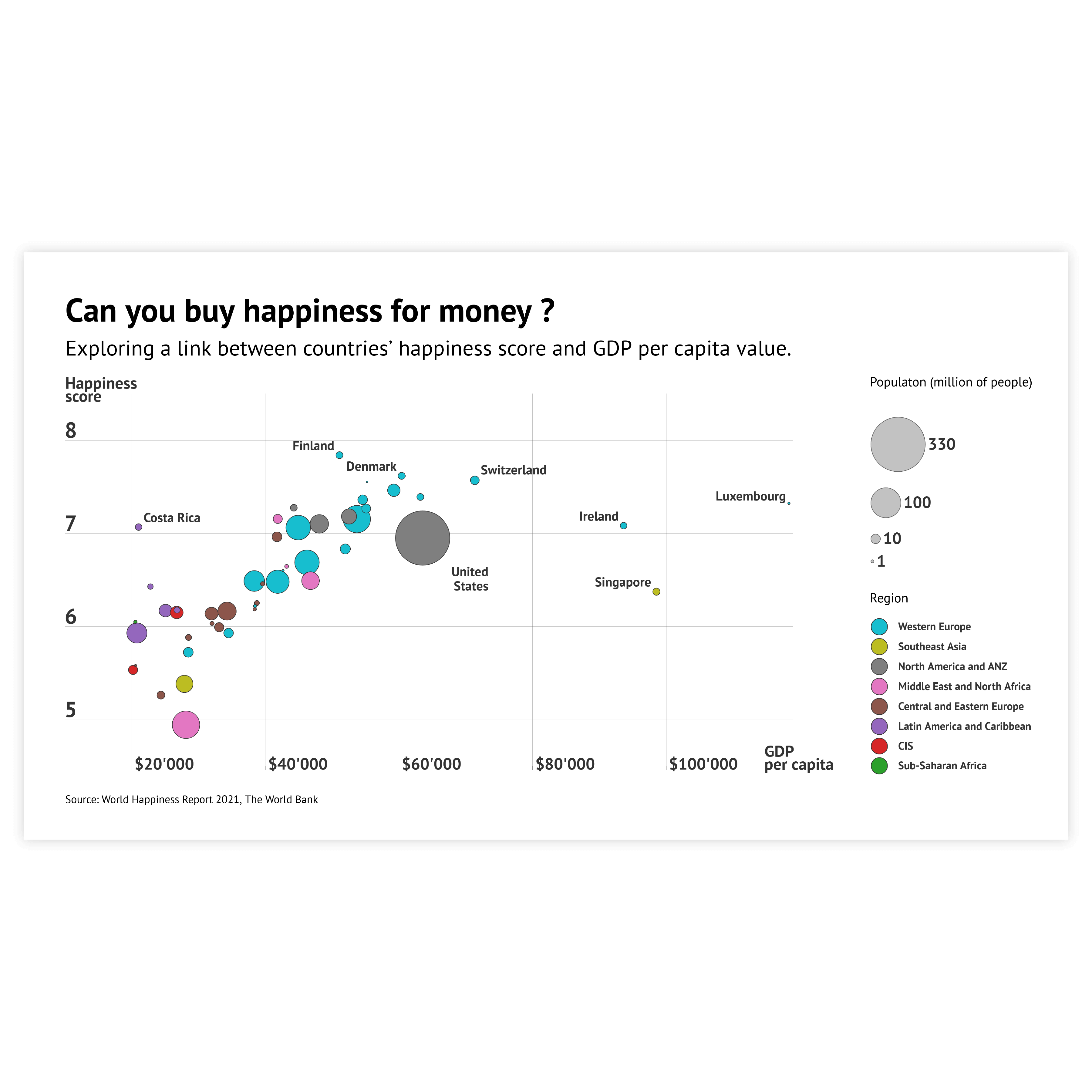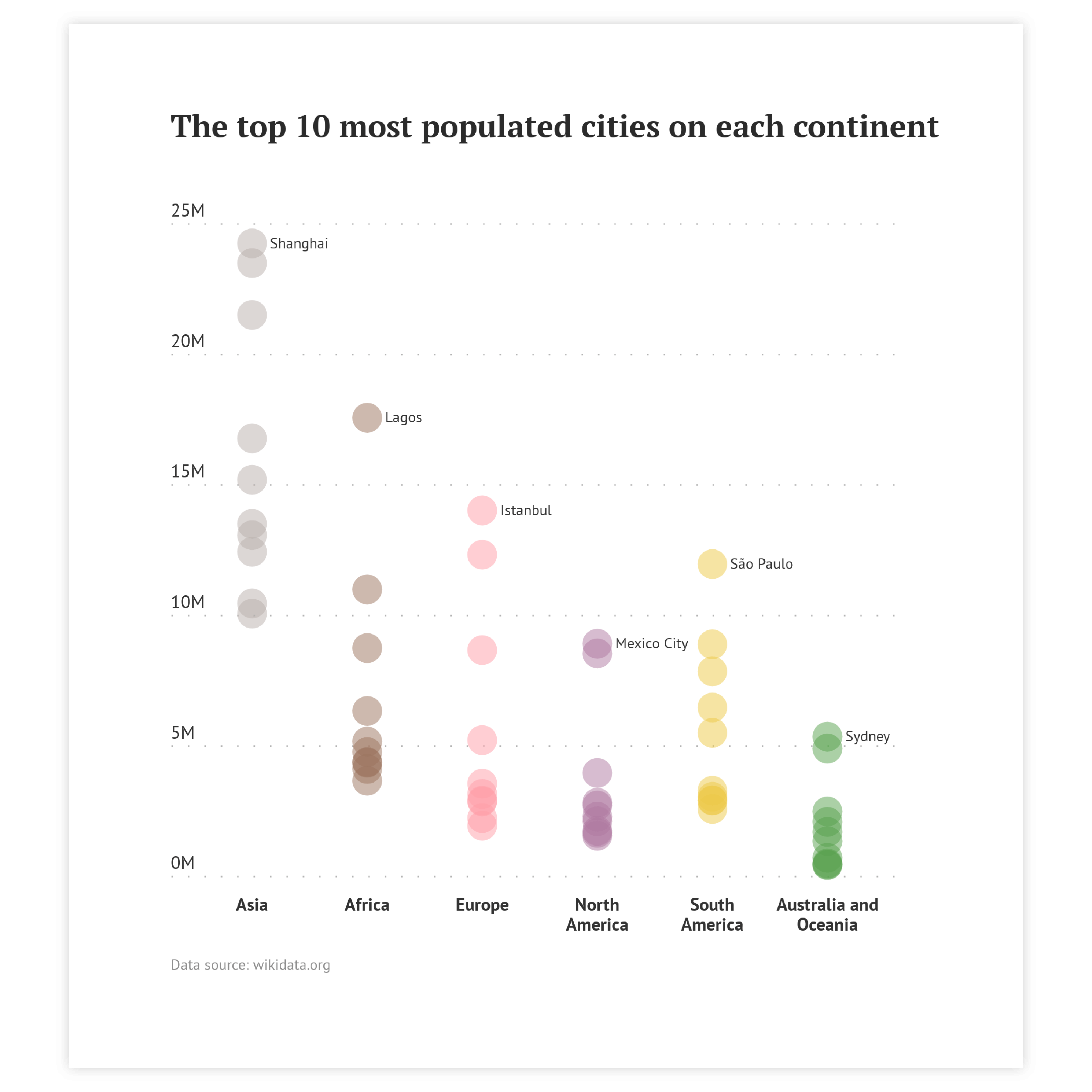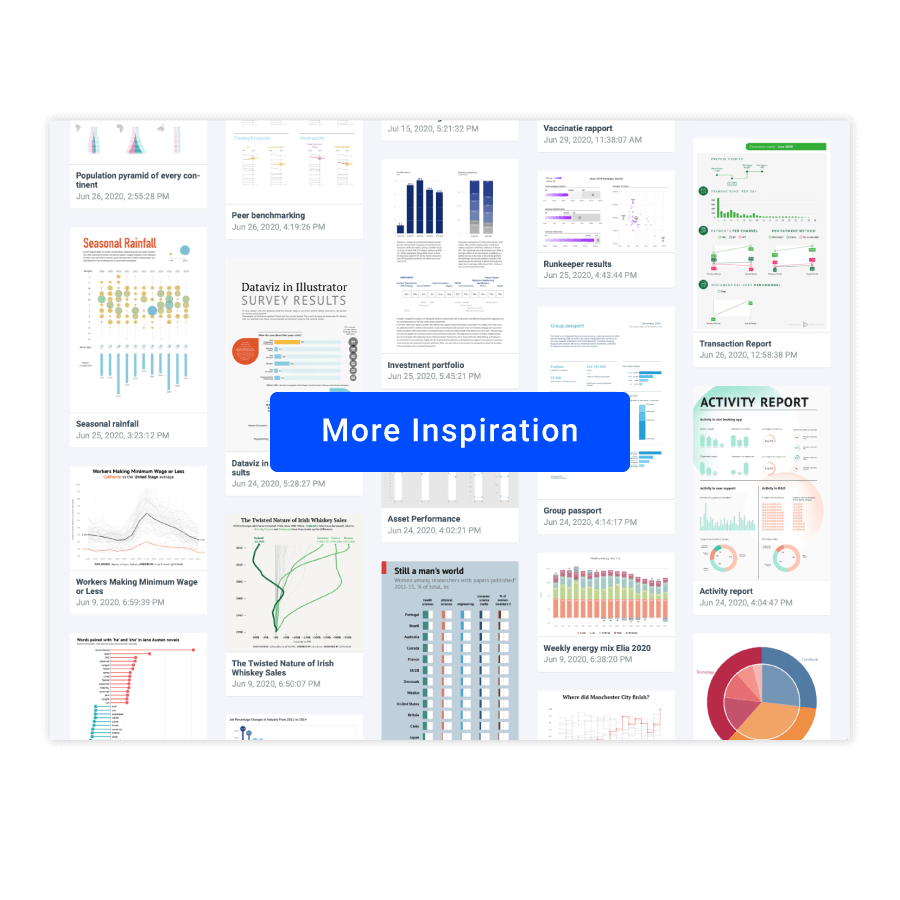Bubble chart
DATYLON > CHART LIBRARY > BUBBLE CHART
What is a bubble chart?
A bubble chart is a set of dots plotted between axes representing two variables. A third variable represents the size of the bubble.
Researchers and analysts often use bubble charts due to their flexibility in representing multiple variables, with some expansions allowing for up to seven variables at once. However, it's important to avoid overloading viewers with too many variables, as this can make it challenging to interpret the chart.
A bubble chart is commonly used to identify correlations between variables and can also help identify clusters and outliers. It has one of the best data-to-space ratios of any chart type.
Due to its versatility, a bubble chart can be adapted into various other chart types, such as heatmaps, dot plots, icon charts, tilemaps, and hybrid charts. This adaptability makes bubble charts a popular choice among infographic designers and data visualization specialists.
Bubble chart inspiration
Scroll and click on the images below to find inspiration samples of bubble charts. With your Datylon account, you can use these designs, customize them and update them with new data.
Variations of bubble charts
The charts below are variations on a bubble chart. To learn how to make them with Datylon, check out the scatter plot user documentation in our Help Center.
Alternatives for a bubble chart
Substitute your bubble chart with any of the charts below when you want a visual alternative that still allows you to use color binding or different icons.
Pro tips for designing a bubble chart
Learn how to improve the readability and visual appeal of your chart.
Binding
The bubble chart is a versatile chart that allows for up to seven variables to be bound. These include the X- and Y-axes, size, color, stroke color, icon, and label. It’s a record among Datylon charts. However, it's essential to exercise caution when binding too many variables as this can quickly overwhelm the reader. To ensure optimal readability, it's recommended to limit the number of bound variables to three or four.
Read moreSorting
If an axis type is set to categorical, sorting can be applied: in ascending, descending and reverse order. This can be a huge timesaver if the sorting of categories hasn’t been prepared in the spreadsheet beforehand.
Read moreColoring
All the possibilities of coloring are available in the bubble chart. Three types of color scales allow detailed communication of both categorical and numerical data.
Read moreData-point styling
The beauty of a bubble chart lies in the ability to customize each bubble individually, allowing for an unparalleled level of control over the appearance and emphasis of the data. With a multitude of styling options available, the possibilities for highlighting specific bubbles are truly endless. Whether it's through color, size, or shape, the ability to fine-tune the visual representation of each bubble opens up a world of creative potential for data visualization.
Read moreLabels instead of bubbles
Sometimes we don’t even need a bubble. A label on its own can be enough for communicating the message. This is done by hiding the data marks and leaving the labels only. The labels can be colored just like the data marks by using the link option for label color.
Read moreJitter
If you use a combination of numerical and categorical axes and the plots on the numerical axis are dense, you might run into overlapping data marks. To avoid that you can use the Jitter property along the categorical axis. It allows you to spread data marks near the category line and make the data marks more visible.
Read more
